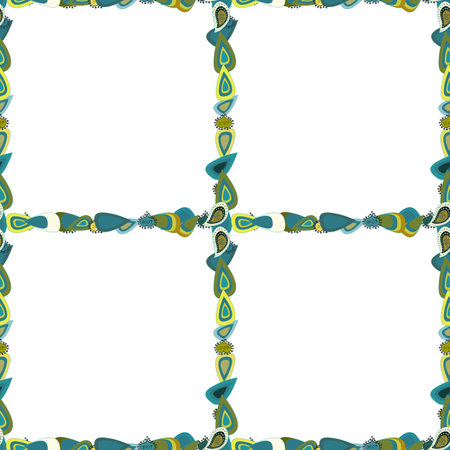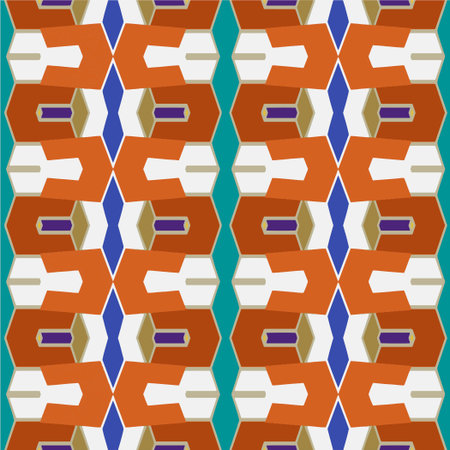Introduction to Handmade Fabric Wall Hangings
Textile art has long been a cherished part of British cultural heritage, weaving together centuries of tradition with modern creativity. In recent years, handmade fabric wall hangings have enjoyed a remarkable resurgence, capturing the imagination of homeowners and interior designers across the UK. These tactile pieces not only bring warmth and personality to living spaces but also celebrate the rich history of textile craftsmanship found throughout Britain. Whether crafted from wool spun in Yorkshire or linen sourced from Northern Ireland, fabric wall hangings add a distinctive texture and visual interest that resonates with the current trend towards personal, meaningful home decor. As open-plan living and minimalism become increasingly popular in modern British interiors, these handcrafted works offer an inviting counterpoint—introducing softness, colour, and a sense of artistry to both traditional cottages and contemporary flats alike.
Traditional British Textiles and Materials
When exploring the world of handmade fabric wall hangings with a UK twist, it’s impossible to ignore the influence of classic British textiles. These materials not only bring a rich heritage to your décor but also offer exceptional texture and visual interest. Let’s take a closer look at quintessential British fabrics such as tweed, tartan, and linen, their origins, and why they are ideally suited for use in wall art.
The Heritage of Iconic British Fabrics
Britain boasts a long-standing tradition of textile production, with regions famed for specific materials that have stood the test of time. Each fabric carries its own history and regional significance, contributing to their unique charm when incorporated into handmade wall hangings. The table below highlights some of these traditional textiles:
| Fabric | Region of Origin | Distinctive Features | Why It Works in Wall Art |
|---|---|---|---|
| Tweed | Scotland (notably Harris and Donegal) | Woollen, durable, textured with earthy tones and subtle patterns | Adds warmth and rustic charm; its tactile surface creates depth on walls |
| Tartan | Scotland | Wool or cotton, distinctive criss-crossed horizontal and vertical bands in multiple colours | Evokes Scottish heritage; vibrant patterns become striking focal points in any room |
| Linen | England & Ireland (notably Belfast) | Made from flax, crisp yet soft texture, naturally breathable and lightweight | Sleek finish works well for modern or minimalist settings; natural hues blend seamlessly with various interiors |
The Appeal of British Textiles in Wall Hangings
The enduring popularity of these fabrics comes down to both aesthetics and practicality. Tweed’s ruggedness and intricate weave introduce a sense of handcrafted quality that resonates with anyone seeking authenticity in home décor. Tartan brings both boldness and tradition—its patterns can be tailored to suit contemporary tastes or classic schemes. Linen’s understated luxury is perfect for creating calming spaces while reflecting the understated elegance often associated with British style.
Combining Tradition with Modern Design
By integrating these traditional materials into fabric wall hangings, you’re not only celebrating Britain’s rich textile history but also adding layers of story and character to your living space. Whether displayed solo or combined in patchwork compositions, tweed, tartan, and linen allow you to craft wall art pieces that are distinctly British—both timeless and refreshingly current.

3. Techniques and Textures: Keeping It Hands-On
When it comes to handmade fabric wall hangings, the real magic lies in the techniques used and the tactile qualities they bring to a space. British textile heritage is renowned for its inventive approach to fabric arts—think of grand tapestries in stately homes or intricate patchwork blankets passed down through generations. To infuse your wall hangings with that unmistakable UK twist, its worth exploring a range of classic methods, each offering unique ways to create depth and interest.
Embroidery: Fine Detail, Personal Touch
Embroidery is a time-honoured British craft, from delicate crewel work to bold contemporary stitches. By layering threads onto fabric, you can outline motifs inspired by British flora or iconic landmarks, adding both visual intrigue and a subtle raised texture. Hand embroidery allows for endless customisation, letting you weave personal stories into your textile art.
Appliqué: Building Layers
Appliqué is another technique deeply rooted in UK craft traditions. This involves sewing pieces of fabric onto a base cloth to create patterns or images—much like assembling a collage. Use tweed offcuts, Liberty prints, or even old shirts for an authentically British feel. The result is a richly layered surface, full of touchable variety and vibrant character.
Quilting: Structure and Warmth
Quilting isn’t just for bedspreads! Incorporating quilted sections into your wall hangings brings structure and dimension. Channel quilted lines or traditional patterns like the Welsh wholecloth quilt add both visual rhythm and tactile comfort. Quilted textures also echo the sense of homeliness found in many UK interiors.
Patchwork: A Nod to Heritage
Patchwork has long been associated with resourcefulness in British households. Mixing fabrics from different eras—perhaps scraps of tartan, linen, or even vintage curtain material—creates a piece that tells its own story. The juxtaposition of textures and colours offers a delightfully hands-on experience that’s both nostalgic and modern.
Adding Tactile Interest
No matter which techniques you choose, always consider how your wall hanging will feel as well as look. Combining wool with cottons, using raised stitches, or mixing smooth silks with rougher linens all contribute to a piece that invites touch—a hallmark of British textile artistry. By embracing these hands-on methods, you’ll create wall hangings that not only celebrate UK craft heritage but also bring warmth and personality into any space.
4. Design Inspiration: British Landscapes and Icons
When crafting handmade fabric wall hangings with a uniquely UK twist, drawing inspiration from the country’s diverse landscapes and iconic imagery is a natural choice. The rolling hills of the Lake District, the rugged coastlines of Cornwall, and the picturesque thatched cottages scattered throughout the countryside all offer endless creative possibilities. To help you get started, here are some ideas for incorporating quintessentially British motifs into your textile art:
Local Motifs to Feature in Your Wall Hangings
| Motif | Description | Suggested Fabrics & Techniques |
|---|---|---|
| Rolling Hills | Inspired by Yorkshire Dales or Cotswolds’ undulating landscapes | Wool felt for depth, layered appliqué for contours |
| Seaside Scenes | Cornish beaches, Brighton Pier, or classic beach huts | Linen for sand, cotton blends for sky and sea; embroidery for waves and details |
| Cosy Cottages | Stone-built or thatched-roof homes nestled in villages | Burlap or tweed for walls, velvet for roofs; hand-stitching to define features |
| Classic London Sights | Big Ben, red phone boxes, black cabs, or double-decker buses | Bold cottons and felt; machine embroidery for sharp lines and lettering |
| Wildlife & Flora | Robins, foxes, bluebells, and hedgerows native to Britain | Printed cottons for flora, textured yarns and patchwork for animals |
Tips for Capturing Local Character in Textiles
- Select Colour Palettes: Use muted greens, soft greys, seaside blues, and brick reds to echo the UK’s natural tones.
- Mimic Texture: Choose fabrics like tweed, wool, or corduroy to reflect local materials often found in British interiors.
- Add Personal Touches: Incorporate vintage buttons or lace trims sourced from local markets to give your piece an authentic feel.
- Layer Techniques: Combine appliqué, hand-embroidery, and patchwork to build up scenes with both visual and tactile interest.
Sourcing Materials Locally: Sustainability Matters
Purchasing fabrics from local haberdasheries or repurposing vintage textiles not only supports small businesses but also enhances the regional character of your work. Seek out remnants of Harris Tweed or Liberty prints for an unmistakably British flavour.
5. Eco-Friendly and Sustainable Approaches
In recent years, the UK has witnessed a notable shift towards eco-conscious living, and this movement is making its mark on handmade fabric wall hangings as well. Artisans across Britain are increasingly turning to upcycled materials—think vintage linens, repurposed tweeds from Scottish mills, or offcuts from local tailors—to create unique pieces with both style and substance. By favouring natural fibres such as British wool, organic cotton, and flax grown in the English countryside, these creators ensure their work not only looks beautiful but also treads lightly on the environment.
Locally-sourced materials are at the heart of this sustainable ethos. Many artists seek out regional suppliers or even collaborate directly with farmers and weavers, supporting small businesses while reducing transportation emissions. Natural dyes derived from plants native to the British Isles—like elderberries, nettles, or oak galls—bring subtle, earthy tones that resonate with the UK’s pastoral landscape.
This eco-friendly approach doesn’t just appeal to environmental sensibilities; it also celebrates craftsmanship and heritage. Each piece tells a story of its origins, inviting homeowners to connect with Britain’s textile traditions while embracing modern sustainability. With an emphasis on repairable designs and long-lasting quality, these wall hangings are more than décor—they’re investments in a greener future for UK interiors.
6. Displaying and Caring for Your Textile Art
Choosing the Perfect Spot
When showcasing your handmade fabric wall hangings, location is key—especially in the UK where rooms can be prone to dampness and fluctuating temperatures. Opt for walls away from direct sunlight to prevent fading, and avoid areas close to radiators or open windows where moisture and heat could cause warping or mildew.
Proper Hanging Techniques
For a secure and aesthetically pleasing display, use sturdy picture hooks or curtain rods fitted with brackets. Lighter pieces can be hung with decorative dowels or wooden battens, which complement traditional British interiors. For larger or heavier textile art, consider professional hanging systems that distribute weight evenly, reducing strain on both the fabric and your walls.
Routine Maintenance
Textile wall art thrives with regular attention. Dust gently using a soft-bristled brush or vacuum with a low-suction upholstery attachment to remove airborne particles common in UK homes. Be cautious with cleaning products; a slightly damp cloth may help with surface marks, but always spot-test first to avoid colour run or fibre damage.
Tackling Damp and Humidity
The British climate often brings persistent humidity, which can encourage mould growth on textiles. Invest in dehumidifiers or silica gel packets for rooms where your hangings are displayed. Ensure good air circulation by occasionally opening windows when weather permits, and check behind hangings periodically for signs of condensation or mildew.
Long-Term Preservation Tips
If you need to store your wall hanging, roll it around an acid-free tube rather than folding, as creases can become permanent over time. Store in breathable cotton bags rather than plastic to allow airflow while protecting from dust. For valuable pieces, consult a textile conservator who is familiar with the challenges posed by the UK’s climate.
By following these practical tips tailored for British homes, you’ll ensure your handmade fabric wall hangings remain vibrant and structurally sound—ready to add warmth and texture to your living space for years to come.


